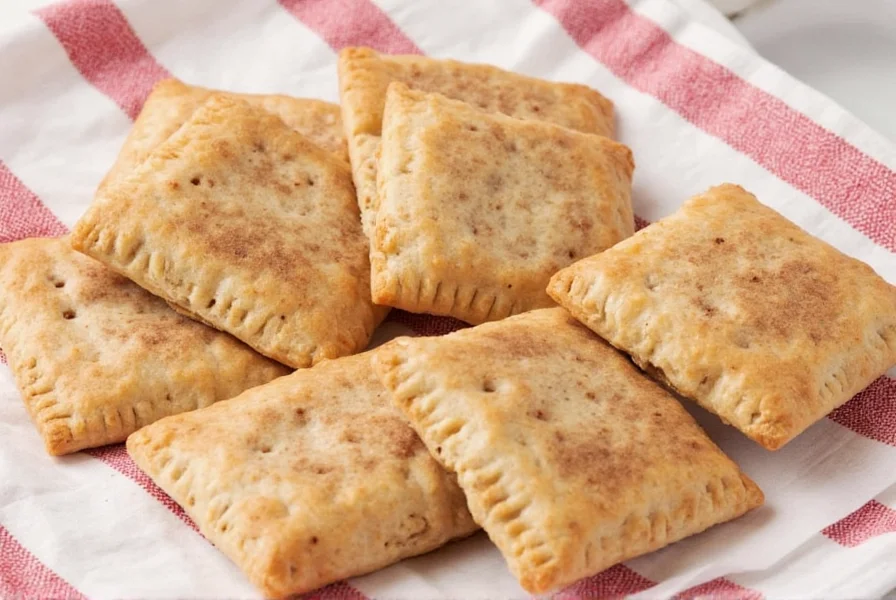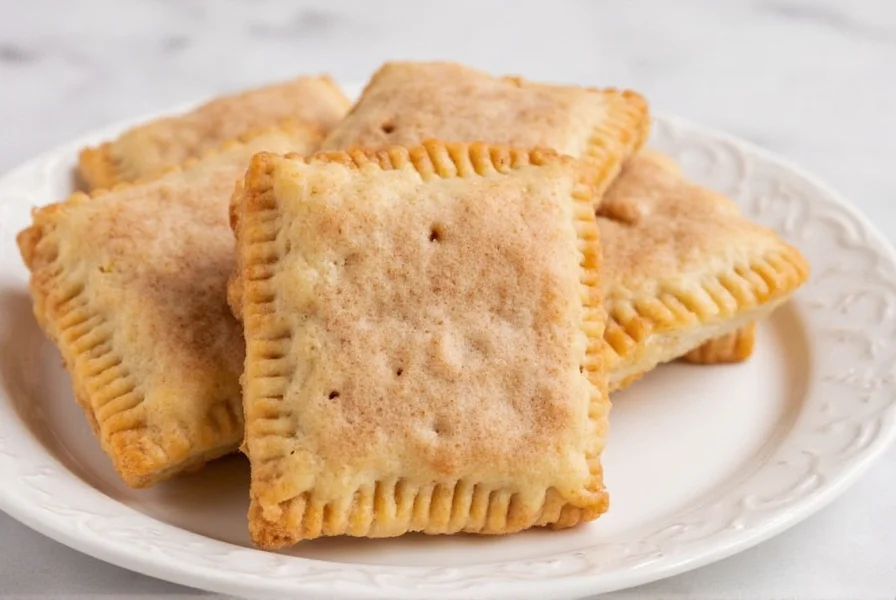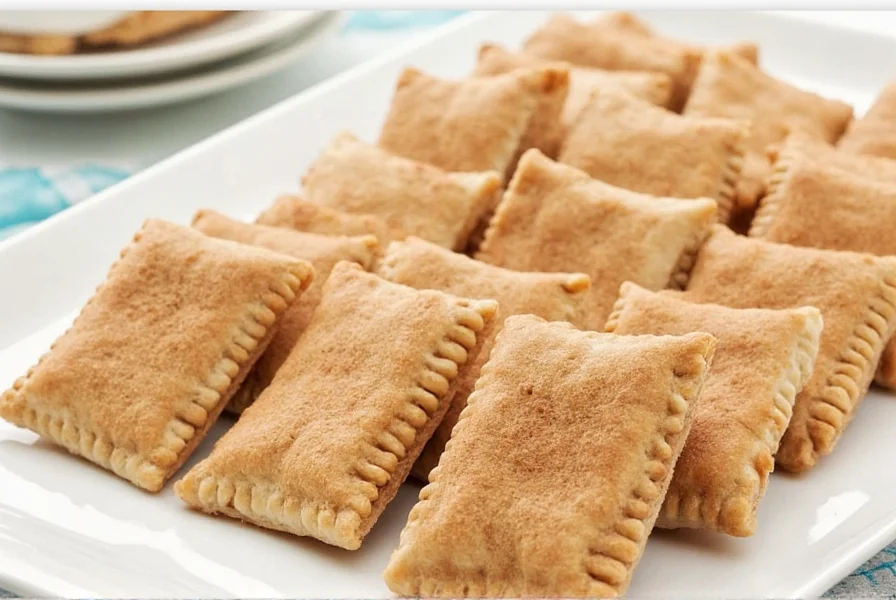Cinnamon Pop Tarts represent one of America's most beloved convenience foods, combining buttery pastry with warm cinnamon-spiced filling in a portable format. Originally introduced by Kellogg's in 1964, the cinnamon variety remains a top seller due to its comforting flavor profile that appeals to both children and adults. Understanding how to recreate these treats at home transforms a processed snack into a customizable bakery-quality experience.
The Evolution of Cinnamon Pop Tarts
Pop-Tarts debuted during the space race era when convenience foods gained popularity. The cinnamon flavor quickly became a staple, though early versions lacked the icing topping introduced in 1967. Today's cinnamon Pop Tarts contain approximately 200 calories per pastry with 14g of sugar, while homemade versions allow ingredient control for reduced sugar content and elimination of artificial preservatives.
Why Homemade Cinnamon Pop Tarts Outperform Store-Bought
Commercial Pop Tarts use hydrogenated oils and high-fructose corn syrup for shelf stability, compromising flavor and texture. Homemade versions feature:
| Characteristic | Store-Bought | Homemade |
|---|---|---|
| Fat Content | Partially hydrogenated oils | Real butter |
| Sweeteners | High-fructose corn syrup | Granulated sugar |
| Shelf Life | 9-12 months | 3-5 days |
| Flavor Complexity | Artificial cinnamon flavor | Real cinnamon with nuanced spice |
Perfect Homemade Cinnamon Pop Tarts Recipe
This recipe yields 8 pastries with flaky crust and balanced cinnamon filling. The secret lies in keeping ingredients cold and using proper pastry technique.

Ingredients
| Component | Ingredients | Measurement |
|---|---|---|
| Pastry Dough | All-purpose flour | 2 ½ cups |
| Cold unsalted butter | 1 cup | |
| Ice water | ¼ cup | |
| Cinnamon Filling | Brown sugar | ½ cup |
| Granulated sugar | ¼ cup | |
| Ground cinnamon | 2 tsp | |
| Icing | Powdered sugar | 1 cup |
| Milk | 2 tbsp |
Step-by-Step Instructions
- Prepare dough: Cut chilled butter into ½" cubes. Combine flour and salt, then cut butter into flour until pea-sized crumbs form. Add ice water gradually until dough holds together.
- Chill: Divide dough into two disks, wrap in plastic, refrigerate for at least 1 hour.
- Roll and cut: Roll each disk to ⅛" thickness. Cut into 4" x 5" rectangles (8 per disk).
- Add filling: Mix filling ingredients. Spoon 1½ tbsp onto half the pastry rectangles, leaving ½" border.
- Seal: Brush edges with water, top with remaining rectangles, and crimp edges with fork.
- Vent: Cut 2-3 small slits in top pastry for steam release.
- Bake: 375°F for 20-22 minutes until golden brown.
- Icing: Mix powdered sugar and milk, drizzle over cooled pastries.

Proven Baking Techniques for Perfect Results
Professional bakers recommend these evidence-based techniques for superior cinnamon pop tarts:
- Temperature control: Keep all ingredients cold to prevent butter from melting before baking, ensuring flaky layers
- Filling ratio: Use 1:1 brown-to-white sugar ratio for complex caramel notes without excessive sweetness
- Pastry thickness: Roll dough to exactly ⅛" for optimal pastry-to-filling ratio
- Baking temperature: Start at 400°F for 5 minutes, then reduce to 350°F to prevent filling leakage
Popular Cinnamon Pop Tarts Variations
Experiment with these tested variations while maintaining the classic cinnamon profile:
- Apple Cinnamon: Add ¼ cup finely diced apple to filling for texture contrast
- Bourbon Cinnamon: Incorporate 1 tsp bourbon into icing for depth
- Spiced Cinnamon: Add pinch of nutmeg and cardamom to filling
- Gluten-Free: Substitute 1:1 gluten-free flour blend with 1 tsp xanthan gum
Serving and Storage Recommendations
For optimal enjoyment, consume homemade cinnamon pop tarts within 24 hours. Store in airtight container at room temperature for up to 3 days. Reheat in toaster oven (not microwave) to restore crispness. Freeze unbaked pastries on baking sheet, then transfer to freezer bags for up to 3 months—bake from frozen, adding 5-7 minutes to baking time.
Frequently Asked Questions
Can I make cinnamon pop tarts without icing?
Yes, many traditional European pastry variations omit icing. For authentic flavor without icing, increase cinnamon to 3 tsp and add ¼ tsp vanilla extract to the filling. The pastry develops a beautiful golden crust naturally during baking without needing decorative icing.
Why do my homemade cinnamon pop tarts leak filling?
Filling leakage typically occurs from three issues: overfilling (use maximum 1½ tbsp per pastry), insufficient edge sealing (ensure ½" border with water-sealed crimping), or baking temperature too low (start at 400°F to set crust quickly). Chilling assembled pastries for 15 minutes before baking also prevents leakage.
How can I make cinnamon pop tarts healthier?
Reduce sugar by 25% in both filling and icing without sacrificing flavor. Substitute half the butter with cold vegetable shortening for lower saturated fat. Add 2 tbsp ground flaxseed to dough for fiber. For dairy-free version, use almond milk in icing. Remember that homemade versions naturally contain fewer preservatives and artificial ingredients than commercial Pop Tarts.
What's the difference between cinnamon roll pop tarts and regular cinnamon pop tarts?
Cinnamon roll pop tarts contain brown sugar and often include small bits of pecans or walnuts in the filling, mimicking the swirl pattern of actual cinnamon rolls. Regular cinnamon pop tarts use primarily granulated sugar with pure cinnamon flavor. The icing on cinnamon roll versions typically includes vanilla and sometimes cream cheese elements for richer flavor.











 浙公网安备
33010002000092号
浙公网安备
33010002000092号 浙B2-20120091-4
浙B2-20120091-4